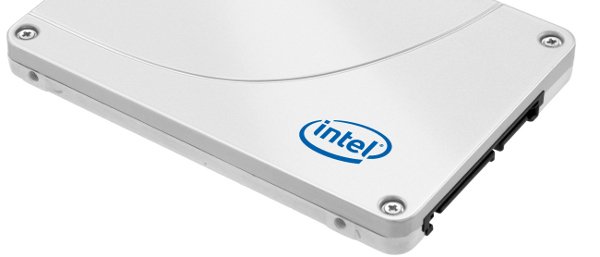Intel, Plextor launch new SSDs: end days for hard drives in sight?

Intel and Plextor have both announced new additions to their SSD line up this week, hitting low price points for fast solid state drives. While they're timed to arrive at the peak of current generation SSD technology, though, it's what comes next that's really interesting.
The two drives in question are Intel's new SSD 330 and Plextor's M3 Pro . They're both on their way to the PC Gamer labs for a head to head review I'm looking forward to. The drives will be the just about the last showdown in this generation of SSDs between the two most popular controller chips, which provide most of the performance of a drive.
Intel's 330 uses the Sandforce SF-2281 , which was seen in SSDs from Corsair, ADATA and OCZ last year and thrashed all competitors thanks to its ability to compress data on the fly. When working with uncompressed data, read and write speeds close to the maximum bandwidth of a 6Gbps SATA port haven't been uncommon. Where data is already compressed, however, they tend to be a bit slower.
Plextor's M3 Pro, meanwhile, uses a chip from rival Marvel, the 88SS9174. It's the same chip as used in OCZ's Vertex 4 and Crucial's M4, but Plextor says that it's heavily customised the firmware so that performance is much closer to the theoretical maximum speeds quoted at all times. The Marvell controllers don't compress data in the same way, which combined with Plextor's True Speed tech should, the company says, deliver a more consistent performance over time.
Certainly it's quoting much faster write speeds than other Marvell-based drives, like Crucial's M4 (a theoretical 200Mbps write speed for the Crucial drive compared to 450Mbps for the Plextor).
In reality, however, the practical differences between a lot of SSDs, especially when it comes to write speeds, aren't easily detectable. They're important, because you want to know you're getting value for money, but upgrading to almost any of the newer SSDs is going to give you that exceptional boot up speed performance that you crave and fast loading times. Write speeds are more important for things like high def video editing, and the chances are that you're going to be much more interested in cost. Getting the biggest drive you can afford makes a lot of sense if it means less housekeep and more games on your fast drive.
At the moment, this is where Intel has the edge. A 120GB SSD 330 costs $149/£110, which makes it the cheapest such drive available at the moment (just). The M3 Pro, meanwhile, is one of the priciest, with 128GB models costing around $205/£150.
The biggest gaming news, reviews and hardware deals
Keep up to date with the most important stories and the best deals, as picked by the PC Gamer team.
That could all change soon, however. Plextor's SSD Project Manager Lytian Lee told PC Gamer that he expects a move to 19nm NAND flash chips to happen sometime around the end of August, which will see a dramatic reduction in the cost of SSDs all round. While most people see SSDs and hard drives co-existing for the foreseeable future – SSDs providing speed, traditional drives providing bulk storage – he's not so sure.
“Once we move to 19nm, the price will go down for sure,” he said, “And I can see a point not too far in the future where SSD prices will be comparable with traditional drives.”

